SLVSAI3A September 2010 – May 2016
PRODUCTION DATA.
- 1 Features
- 2 Applications
- 3 Description
- 4 Revision History
- 5 Pin Configuration and Functions
- 6 Specifications
- 7 Detailed Description
- 8 Application and Implementation
- 9 Power Supply Recommendations
- 10Layout
- 11Device And Documentation Support
- 12Mechanical, Packaging, And Orderable Information
Package Options
Mechanical Data (Package|Pins)
Thermal pad, mechanical data (Package|Pins)
Orderable Information
6 Specifications
6.1 Absolute Maximum Ratings
see (1)(1) Stresses beyond those listed under Absolute Maximum Ratings may cause permanent damage to the device. These are stress ratings only, which do not imply functional operation of the device at these or any other conditions beyond those indicated under Recommended Operating Conditions. Exposure to absolute-maximum-rated conditions for extended periods may affect device reliability.
6.2 ESD Ratings
| VALUE | UNIT | |||
|---|---|---|---|---|
| V(ESD) | Electrostatic discharge | Human-body model (HBM), per AEC Q100-002(1) | ±2000 | V |
| Charged-device model (CDM), per AEC Q100-011 | ±500 | |||
(1) AEC Q100-002 indicates that HBM stressing shall be in accordance with the ANSI/ESDA/JEDEC JS-001 specification.
6.3 Recommended Operating Conditions
over operating free-air temperature range (unless otherwise noted)| MIN | MAX | UNIT | ||
|---|---|---|---|---|
| VI | Unregulated input voltage | 1.7 | 5.5 | V |
| VO | Output voltage | 0 | 5.5 | V |
| IOUT | Output current | 0 | 500 | mA |
6.4 Thermal Information
| THERMAL METRIC(1) | TPS73601-Q1, TPS73625-Q1, TPS73633-Q1 | UNIT | |
|---|---|---|---|
| DBV (SOT-23) | |||
| 5 PINS | |||
| RθJA | Junction-to-ambient thermal resistance | 221.9 | °C/W |
| RθJC(top) | Junction-to-case (top) thermal resistance | 74.9 | °C/W |
| RθJB | Junction-to-board thermal resistance | 51.9 | °C/W |
| ψJT | Junction-to-top characterization parameter | 2.8 | °C/W |
| ψJB | Junction-to-board characterization parameter | 51.1 | °C/W |
(1) For more information about traditional and new thermal metrics, see the Semiconductor and IC Package Thermal Metrics application report, SPRA953.
6.5 Electrical Characteristics
Over operating temperature range (TA = –40°C to 125°C), VIN = VOUT(nom) + 0.5 V(1), IOUT = 10 mA, VEN = 1.7 V, and COUT = 0.1 μF, unless otherwise noted. Typical values are at TJ = 25°C.| PARAMETER | TEST CONDITIONS | MIN | TYP | MAX | UNIT | ||
|---|---|---|---|---|---|---|---|
| VIN | Input voltage(1)(2) | 1.7 | 5.5 | V | |||
| VFB | Internal reference (TPS73601) | TJ = 25°C | 1.198 | 1.2 | 1.21 | V | |
| VOUT | Output voltage (TPS73601)(3) | VFB | 5.5 – VDO | V | |||
| Accuracy(1)(4) | Nominal | TJ = 25°C | –0.5% | 0.5% | |||
| over VIN, IOUT, and T | VOUT + 0.5 V ≤ VIN ≤ 5.5 V; 10 mA ≤ IOUT ≤ 400 mA |
–1% | ±0.5% | 1% | |||
| ΔVOUT%/ΔVIN | Line regulation(1) | VO(nom) + 0.5 V ≤ VIN ≤ 5.5 V | 0.01 | %/V | |||
| ΔVOUT%/ΔIOUT | Load regulation | 1 mA ≤ IOUT ≤ 400 mA | 0.002 | %/mA | |||
| 10 mA ≤ IOUT ≤ 400 mA | 0.0005 | ||||||
| VDO | Dropout voltage(5)
(VIN = VOUT(nom) – 0.1 V) |
IOUT = 400 mA | 75 | 200 | mV | ||
| ZO(DO) | Output impedance in dropout | 1.7 V ≤ VIN ≤ VOUT + VDO | 0.25 | Ω | |||
| ICL | Output current limit | VOUT = 0.9 × VOUT(nom) | 400 | 650 | 800 | mA | |
| 3.6 V ≤ VIN ≤ 4.2 V, 0°C ≤ TJ ≤ 70°C | 500 | 800 | mA | ||||
| ISC | Short-circuit current | VOUT = 0 V | 450 | mA | |||
| IREV | Reverse leakage current(6) (–IIN) | VEN ≤ 0.5 V, 0 V ≤ VIN ≤ VOUT | 0.1 | 10 | μA | ||
| IGND | GND pin current | IOUT = 10 mA (IQ) | 400 | 550 | μA | ||
| IOUT = 400 mA | 800 | 1000 | |||||
| ISHDN | Shutdown current (IGND) | VEN ≤ 0.5 V, VOUT ≤ VIN ≤ 5.5, –40°C ≤ TJ ≤ 100°C |
0.02 | 1.3 | μA | ||
| IFB | FB pin current (TPS73601) | 0.1 | 0.45 | μA | |||
| PSRR | Power-supply rejection ratio (ripple rejection) | f = 100 Hz, IOUT = 400 mA | 58 | dB | |||
| f = 10 KHz, IOUT = 400 mA | 37 | ||||||
| VN | Output noise voltage BW = 10 Hz – 100 KHz |
COUT = 10 μF, No CNR | 27 × VOUT | μVRMS | |||
| COUT = 10 μF, CNR = 0.01 μF | 8.5 × VOUT | ||||||
| tSTR | Start-up time | VOUT = 3 V, RL = 30 Ω COUT = 1 μF, CNR = 0.01 μF | 600 | μs | |||
| VEN(HI) | EN pin high (enabled) | 1.7 | VIN | V | |||
| VEN(LO) | EN pin low (shutdown) | 0 | 0.5 | V | |||
| IEN(HI) | EN pin current (enabled) | VEN = 5.5 V | 0.02 | 0.1 | μA | ||
| TSD | Thermal shutdown temperature | Shutdown, temperature increasing | 160 | °C | |||
| Reset, temperature decreasing | 140 | ||||||
(1) Minimum VIN = VOUT + VDO or 1.7 V, whichever is greater.
(2) For VOUT(nom) < 1.6 V, when VIN ≤ 1.6 V, the output locks to VIN and may result in a damaging over-voltage level on the output. To avoid this situation, disable the device before powering down the VIN.
(3) TPS73601 is tested at VOUT = 2.5 V.
(4) Tolerance of external resistors not included in this specification.
(5) VDO is not measured for fixed output versions with VOUT(nom) < 1.8 V.
(6) Fixed-voltage versions only; see Application and Implementation for more information.
6.6 Typical Characteristics
For all voltage versions, at TJ = 25°C, VIN = VOUT(nom) + 0.5 V, IOUT = 10 mA, VEN = 1.7 V, and COUT = 0.1 μF, unless otherwise noted.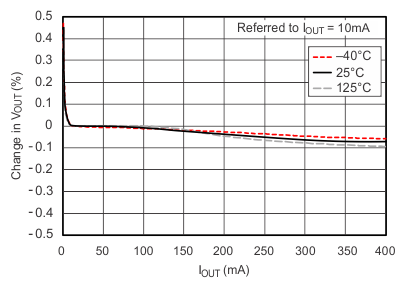 Figure 1. Load Regulation
Figure 1. Load Regulation
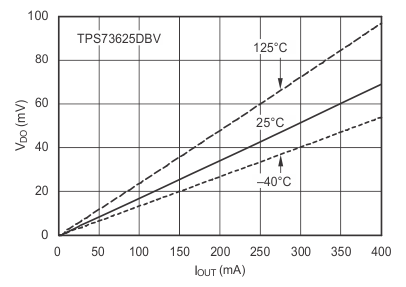 Figure 3. Dropout Voltage vs Output Current
Figure 3. Dropout Voltage vs Output Current
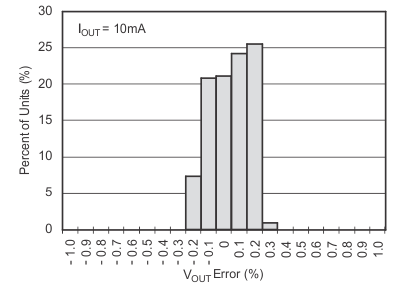 Figure 5. Output Voltage Accuracy Histogram
Figure 5. Output Voltage Accuracy Histogram
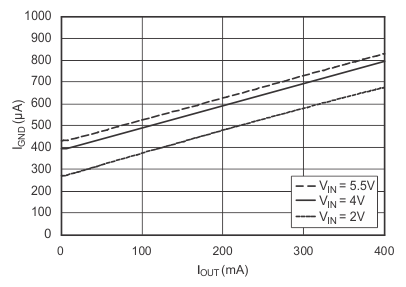 Figure 7. Ground Pin Current vs Output Current
Figure 7. Ground Pin Current vs Output Current
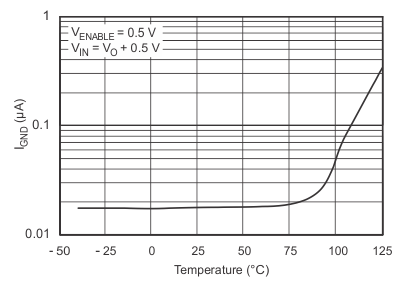 Figure 9. Ground Pin Current in Shutdown vs Temperature
Figure 9. Ground Pin Current in Shutdown vs Temperature
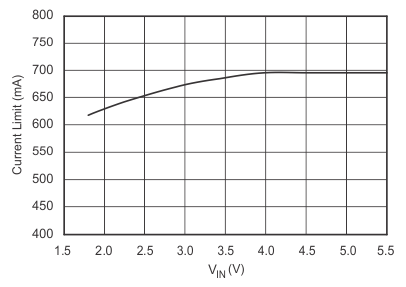 Figure 11. Current Limit vs VIN
Figure 11. Current Limit vs VIN
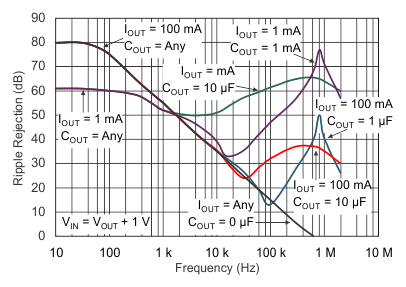 Figure 13. PSRR (Ripple Rejection) vs Frequency
Figure 13. PSRR (Ripple Rejection) vs Frequency
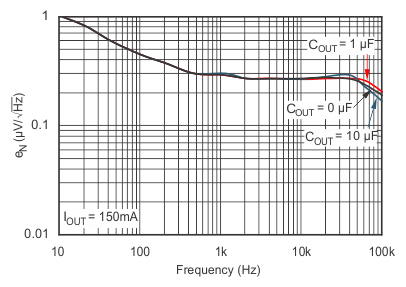 Figure 15. Noise Spectral Density CNR = 0 μF
Figure 15. Noise Spectral Density CNR = 0 μF
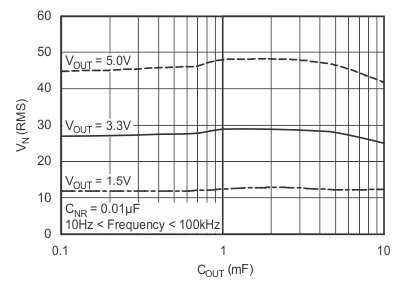 Figure 17. RMS Noise Voltage vs COUT
Figure 17. RMS Noise Voltage vs COUT
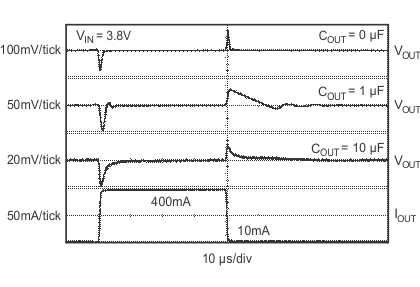 Figure 19. TPS73633 Load Transient Response
Figure 19. TPS73633 Load Transient Response
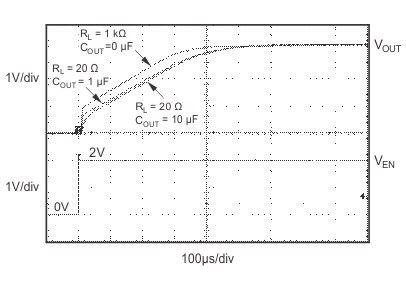 Figure 21. TPS73633 Turnon Response
Figure 21. TPS73633 Turnon Response
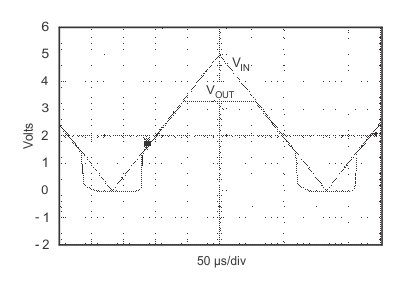
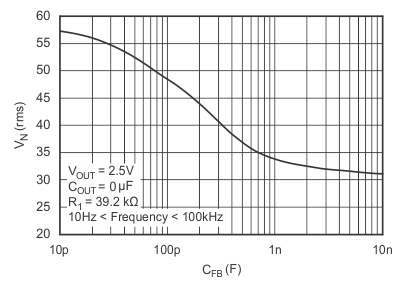 Figure 25. TPS73601 RMS Noise Voltage vs CFB
Figure 25. TPS73601 RMS Noise Voltage vs CFB
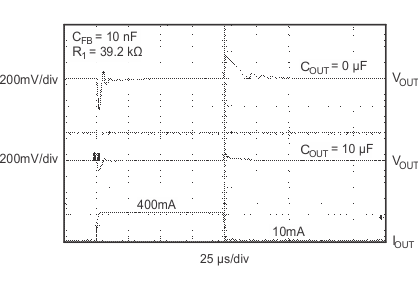 Figure 27. TPS73601 Load Transient, Adjustable Version
Figure 27. TPS73601 Load Transient, Adjustable Version
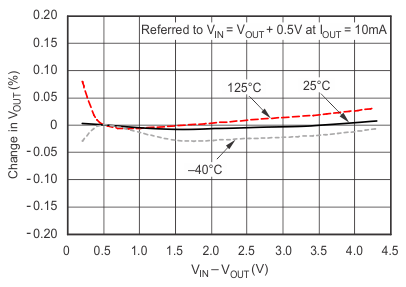 Figure 2. Line Regulation
Figure 2. Line Regulation
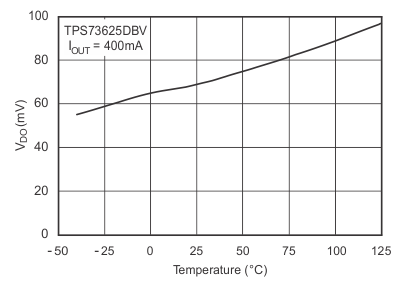 Figure 4. Dropout Voltage vs Temperature
Figure 4. Dropout Voltage vs Temperature
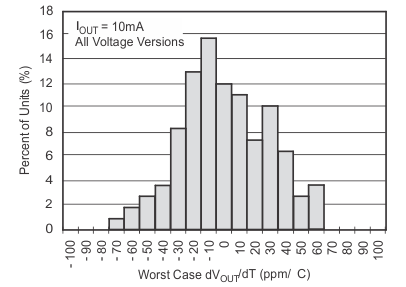 Figure 6. Output Voltage Drift Histogram
Figure 6. Output Voltage Drift Histogram
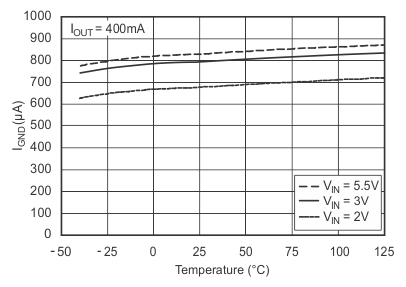 Figure 8. Ground Pin Current vs Temperature
Figure 8. Ground Pin Current vs Temperature
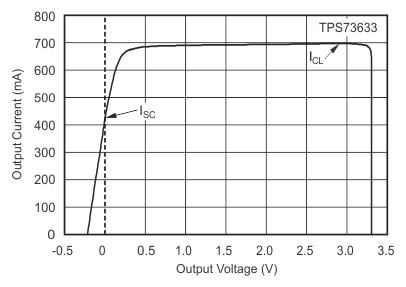 Figure 10. Current Limit vs VOUT (Foldback)
Figure 10. Current Limit vs VOUT (Foldback)
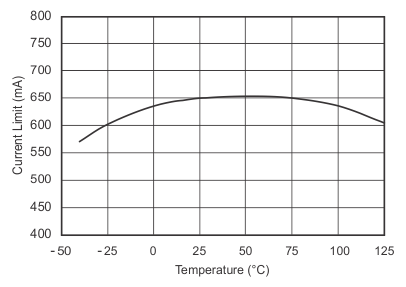 Figure 12. Current Limit vs Temperature
Figure 12. Current Limit vs Temperature
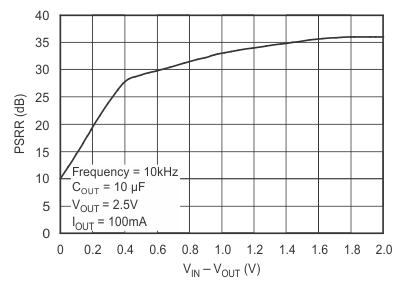 Figure 14. PSRR (Ripple Rejection) vs VIN – VOUT
Figure 14. PSRR (Ripple Rejection) vs VIN – VOUT
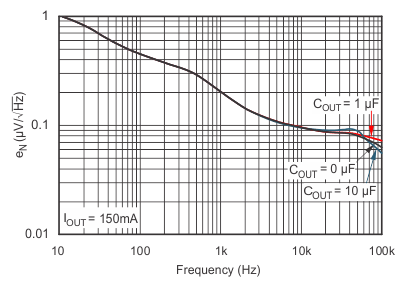 Figure 16. Noise Spectral Density CNR = 0.01 μF
Figure 16. Noise Spectral Density CNR = 0.01 μF
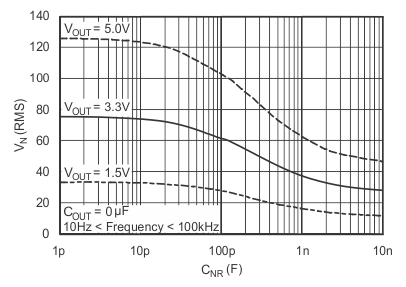 Figure 18. RMS Noise Voltage vs CNR
Figure 18. RMS Noise Voltage vs CNR
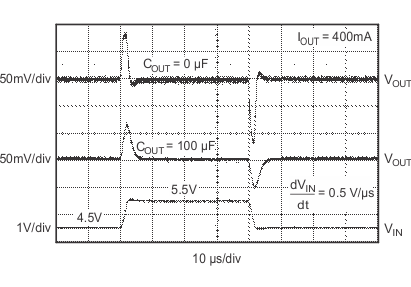 Figure 20. TPS73633 Line Transient Response
Figure 20. TPS73633 Line Transient Response
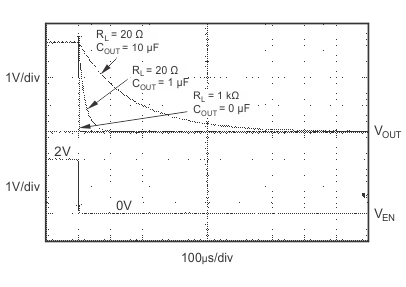 Figure 22. TPS73633 Turnoff Response
Figure 22. TPS73633 Turnoff Response
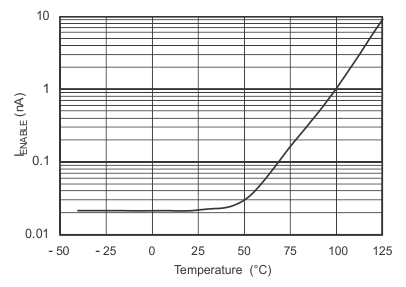 Figure 24. IENABLE vs Temperature
Figure 24. IENABLE vs Temperature
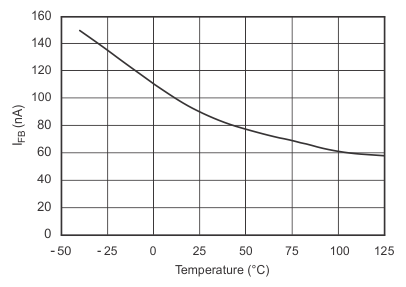 Figure 26. TPS73601 IFB vs Temperature
Figure 26. TPS73601 IFB vs Temperature
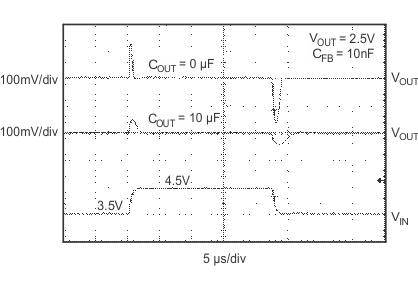 Figure 28. TPS73601 Line Transient, Adjustable Version
Figure 28. TPS73601 Line Transient, Adjustable Version